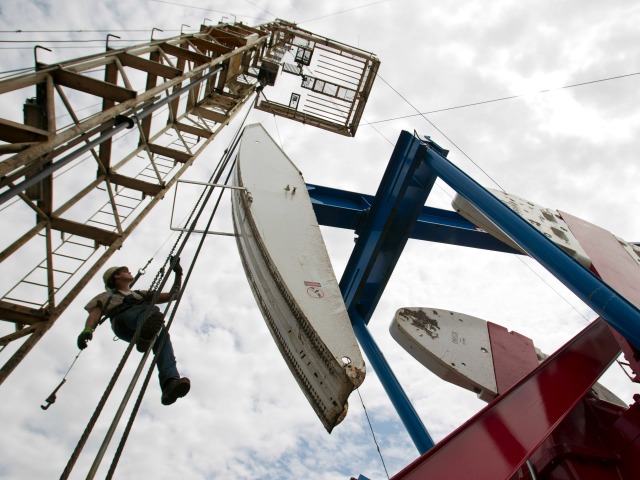
Saudi Arabia, Kuwait, and United Arab Emirates–the only OPEC members financially solvent enough to afford temporarily reducing crude oil production–are believed to have refused to cut output on November 27, 2014 to push oil prices down to$68 a barrel in hopes of killing the U.S. oil boom.
But unlike traditional oil wells that lose future production capability if temporarily shut down, U.S. shale oil wells have the flexibility to close and then reopen without a long-term loss of production capability.
From an annual low of $1.21 a barrel in 1970 to an annual high of $108.90 in 2012, OPEC, through member restricted production quotas, has tried to parasitically bleed its customers to the fullest extent. But each time the cartel dramatically forced up prices, its own members would ship more than their quota, and worldwide exploration and production would surge. A resulting massive surplus would then cause prices to crash.
Although the current price may seem shockingly low, it is substantially higher than the average of $32.75 a barrel average since OPEC first jacked-up prices in 1973.
For thirty years the international price for crude oil took a rollercoaster ride, but prices remained stable over time. Crude oil averaged $20 a barrel from 1974-1983; $21 from 1984-1993; and $22 from 1994-2003.
But uniquely over the ten years from 2004-2013, prices moved up and stayed up. Despite a 2008 interim price swing up to a high of $127.59 in June then down to a low $41.00 in December, crude oil averaged $76 a barrel for the decade, more than three times the prior thirty-year average.
The last decade of consistently high crude oil prices caused expected U.S. demand to fall by 4 million barrels a day (mb/d); while incentivizing U.S. oil production to grow by 5 mb/d. There currently is a 2.5 million mb/d worldwide surplus of crude oil. Despite prices falling 30% since June, global production grew to a new high last month of 94.2 mb/d.
The American energy boom has primarily been funded with high interest rate junk bonds. Although the U.S. energy exploration and development represents less than 2% of American jobs, it consumes 7% of business capital spending each year. Energy now accounts for over 12% of the $2 trillion junk bond market.
OPEC may hope oil prices below $65 a barrel will kill the profitability of North American shale fracking and bankrupt the industry. Low prices may cause some reductions in future drilling and bankrupt a number of highly leveraged companies. But horizontal shale oil production is extraordinarily flexible compared to traditional vertical flow wells.
Temporarily closing down production at a vertical oil well usually results in substantial “stoppage of the pores of the oil-bearing rock.” This reduces “bottomhole pressure” that force oil up through the well tube to the surface and limits the future production capability of the well. But since U.S. horizontal drilling injects water and solvents to free oil from shale and creates its own pressure to push oil up through a cement-lined casing to the surface, shale oil wells can be closed and reopened with virtually no future production capability lost.
OPEC members Venezuela, Algeria, Libya, Nigeria, and Ecuador cannot wait out the recent price drop. The stability of their regimes is directly tied to the in-flow of dollars from oil exports. Facing potential revolutionary pressures as cash shrinks, smaller OPEC members will be forced to over-produce quotas and drive oil prices even lower.
For the forty years after the 1973 oil embargo, the OPEC cartel predatorily bled the economies of its customers. But OPEC’s greedy strategy over the last decade created incentives that powered the U.S. shale oil production boom. OPEC is now facing an epic structural shift in pricing power where production cut-backs to force prices up will only further incentivize more American production.
Chriss Street suggests that if you are interested in economics, please click on Is Deflation Good for Shoppers or Death for Nations?

COMMENTS
Please let us know if you're having issues with commenting.